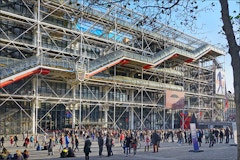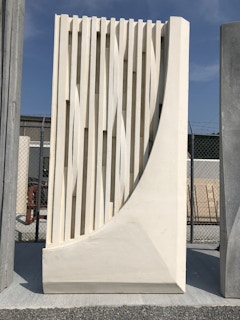
Two Sides to Sustainability & High-performance
High performance can be defined as “a building that integrates and optimizes all major high-performance building attributes, including energy

High performance can be defined as “a building that integrates and optimizes all major high-performance building attributes, including energy
Responsive shading systems can dynamically improve indoor environmental conditions based on outdoor climate variations. Among the technologies,


What does an engineer do? An engineer imagines. What are your sources of inspiration? Mic Patterson remembers Peter Rice and discusses his enduring legacy.

The virtual event series featured a panel among industry experts followed by a networking happy hour on the last two Fridays in March 2021.

New approaches to lightweight metal forming have the potential to advance architectural fabrication, particularly in the design and engineering of

Drawdown is an inspiring new effort to manage atmospheric carbon and the resulting climate impacts. This brief reveiw discusses the book, the movement, and the potential.

Providing a unique and integral cladding/envelope solution suited for high-rise buildings has been an inherent challenge for this building typology



The conference aims at providing new points of view on the current state, upcoming challenges, and innovations in the field.

Precast Concrete Enclosures is an elective course taught by Assistant Professor Pablo Moyano Fernandez at Washington University in St. Louis. The primary goal of the course is to enable students to envision and materialize full-scale building envelopes using precast concrete.

The Simulation vs. Reality Forum proved to be the most popular yet hosted by FTI, in person or virtual, emphasizing the importance and sensitivity of this topic in our professional work and its impact on the built environment.

The leading and largest construction & design show for New York and the Tri-state area.

This article explores the need for measurement and verification of building envelope and mechanical systems.

Reviewing John Neary's Circadian Curtain Wall, one is confronted with an insistent question: why hasn't anyone started construction on this intriguing building design yet? John has provided FTI with a presentation to explain the thinking behind the Circadian Curtain Wall in greater detail.

Dive deeper into the top papers from the 2020 World Congress! We invite you to tune in to the second episode of the series with Eric Haas, FAIA, LEED AP BD+C, Principal at DSH // Architecture, who will be speaking about his winning paper, "Put Your Sweater On! A Case for Low Performance."

What environmental impact does one object have on the world? This is the question at the core of life cycle assessments (LCA); the embodied carbon lens. ...the current architectural practice rarely provides enough time to explore this type of examination.